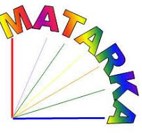Oak-hornbeam forests on sand (Corydali pumilae-Carpinetum Kevey 2008) in Vértesalja, Hungary
Abstract
The oak-hornbeam forests developed on sand in Vértesalja (the northern foot of the Vértes Hills) have not been studied in detail yet. To characterize the community and determine its phytosociological affinity, we recorded and analyzed 25 relevés using traditional and multivariate statistical methods. We found that these oak-hornbeam forests have a high proportion of Fagetalia elements in their species composition and differ markedly from the oak-hornbeam forests growing in similar habitats in Belső-Somogy. These oak-hornbeam forests host several rare species like Corydalis intermedia, Daphne laureola and Scutellaria columnae. We identified these forest stands with the oak-hornbeam forests distributed in the Transdanubian Mountain Range representing the association Corydali pumilae-Carpinetum.
References
Becking R. W. 1957: The Zürich-Montpellier school of phytosociology. Botanical Review 23: 411–488. https://doi.org/10.1007/bf02872328
Borhidi A. 1961: Klimadiagramme und klimazonale Karte Ungarns. Annales Universitatis Scientiarum Budapestinensis de Rolando Eötvös nominatae, Sectio Biologica 4: 21–50.
Borhidi A. 1993: A magyar flóra szociális magatartás típusai, természetességi és relatív ökológiai értékszámai. Janus Pannonius Tudományegyetem, Pécs, 95 pp.
Borhidi A. 1995: Social behaviour types, the naturalness and relative ecological indicator values of the higher plants in the Hungarian flora. Acta Botanica Hungarica 39: 97–181.
Borhidi A., Kevey B. 1996: An annotated checklist of the Hungarian plant communities II. In: Borhidi A. (ed.): Critical revision of the Hungarian plant communities. Janus Pannonius University, Pécs, pp. 95–138.
Borhidi A., Kevey B., Lendvai G. 2012: Plant communities of Hungary. Akadémiai Kiadó, Budapest, 544 pp.
Boros Á. 1954: A Vértes, a Velencei hegység, a Velencei tó és környékük növényföldrajza. Földrajzi Értesítő 3: 280–309.
Braun-Blanquet J. 1964: Pflanzensoziologie. Ed. 3. Springer Verlag, Wien – New York, 865 pp. https://doi.org/10.1007/978-3-7091-8110-2
Horváth F., Dobolyi Z. K., Morschhauser T., Lőkös L., Karas L., Szerdahelyi T. 1995: Flóra adatbázis 1.2. Taxon-lista és attribútum-állomány. MTA Ökológiai és Botanikai Kutatóintézete, Vácrátót, 267 pp.
Isépy I. 1970: Phytozönologische Untersuchungen und Vegetationskartierung im südöstlichen Vértes-Gebirge. Acta Botanica Academiae Scientiarum Hungaricae 16(1–2): 59–110.
Issler E. 1931: Les associations silvatiques haut-rhinoises. Bulletin de la Société Botanique de France 78: 62 –141.
Jakucs P. 1967: Gedanken zur höheren Systematik der europäischen Laubwälder. Contribuţii Botanici Cluj 1967: 159–166.
Jakucs P. 1981: Magyarország legfontosabb növénytársulásai. In: Hortobágyi T., Simon T. (szerk.): Növényföldrajz, társulástan és ökológia. Tankönyvkiadó, Budapest, pp. 225–263.
Kevey B. 2008: Magyarország erdőtársulásai. Tilia 14: 1–488. + CD-adatbázis (244 ábra + 230 táblázat).
Kevey B. 2013: Belső-Somogy homoki gyertyános-tölgyesei (Fraxino pannonicae-Carpinetum Soó et Borhidi in Soó 1962). Kaposvári Rippl-Rónai Múzeum Közleményei 1: 17–40. https://doi.org/10.26080/krrmkozl.2013.1.17
Kevey B. 2014: A Bakonyalja homokvidékének erdei V. Gyertyános-tölgyesek (Convallario-Carpinetum). Folia Musei Historico-Naturalis Bakonyiensis 31: 47–72.
Kevey B. 2021: A Duna-Tisza köze gyertyános-tölgyesei (Convallario-Carpinetum Kevey 2008). Kitaibelia 26(1): 49-76. https://doi.org/10.17542/kit.26.49
Kevey B., Hirmann A. 2002: „NS” számítógépes cönológiai programcsomag. In: Horváth A. (szerk.): Aktuális flóra- és vegetációkutatások a Kárpát-medencében V. Pécs, 2002. március 8–10. (Összefoglalók), Pécsi Tudományegyetem Növénytani Tanszék, Duna-Dráva Nemzeti Park Igazgatósága, Baranya Megyei Múzeumok Igazgatósága, Kosbor Természetvédelmi Egyesület, Pécs, p. 74.
Kevey B., Papp L., Lendvai G. 2017: A Nyírség gyertyános-tölgyesei (Convallario-Carpinetum Kevey 2008). Botanikai Közlemények 104(1): 147–164. https://doi.org/10.17716/BotKozlem.2017.104.1.147
Kevey B., Riezing N., Simon Gy. 2021: A Vértesalja homoki bükkösei (Daphno laureolae-Fagetum Borhidi in Borhidi et Kevey 1996). Botanikai Közlemények 108(2): 157–168. https://doi.org/10.17716/BotKozlem.2021.108.2.157
Király G. (szerk.) 2009: Új magyar füvészkönyv. Magyarország hajtásos növényei. Határozókulcsok. Aggteleki Nemzeti Park Igazgatóság, Jósvafő, 616 pp.
Luquet A. 1926: Essai sur la géographie botanique de l’Auvergne: Les associations végétales du Massif des Monts-Dores. Geographie Botanique de l’Auvergne. Les Presses Universitaires de France, Paris, pp. 1–263.
Mucina L., Grabherr G., Wallnöfer S. 1993: Die Pflanzengesellschaften Österreichs III. Wälder und Gebüsche. Gustav Fischer Verlag, Jena – Stuttgart – New York, 353 pp.
Oberdorfer E. 1992: Süddeutsche Pflanzengesellschaften IV. Wälder und Gebüsche. A. Textband. Gustav Fischer Verlag, Jena – Stuttgart – New York, 282 pp. https://doi.org/10.1002/biuz.19930230311
Pawłowski B., Sokołowski M., Wallisch K. 1928: Die Pflanzenassoziationen des Tatra-Gebirges VII. Die Pflanzenassoziationen und die Flora des Morskie Oko-Tales. Bulletin International de l’Academie, Polonaise des Sciences et Lettres, Classe des Sciences Mathématiques et Naturelles; Série B: Sciences Naturelles, Cracovie, Suppl. 1927: 205–272.
Podani J. 2001: SYN-TAX 2000. Computer Programs for Data Analysis in Ecology and Systematics. User’s Manual. Scientia, Budapest, 53 pp.
Riezing N. 2011: A Vértesalja erdeinek vizsgálata, tájhasználat és vegetáció kapcsolata. Doktori értekezés, Nyugat-Magyarországi Egyetem, Sopron. Kézirat. 125 pp. + melléklet. http://doktori.uni-sopron.hu/id/eprint/321/1/disszertacio.pdf
Soó R. 1964, 1966, 1968, 1970, 1973, 1980: A magyar flóra és vegetáció rendszertani-növényföldrajzi kézikönyve I–VI. Akadémiai Kiadó, Budapest.
Vlieger J. 1937: Aperçu sur les unités phytosociologiques supérieures des Pays-Bas. Nederlandsch Kruidkundig Archief, Serie 3, 47(1): 335-353.


















